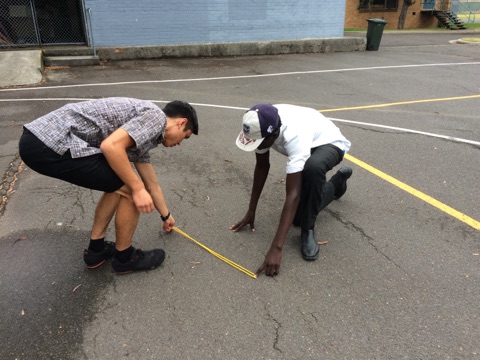In the quest to make a circle’s diameter:circumference ratio a little more tangible to my VCAL students I thought of a way to extend linear arithmetic blocks (LAB) to this new context.
Cut out 6 or 7 pieces of string/rope, each as long as your LAB ‘one’ length. Cut out two bits of rope of length equivalent 0.14 w.r.t your LAB resources.
Go outside with chalk. Use one of the one’s to draw a circle of diameter one as pictured below.
Make clear to students that the pieces of string are the same length as one.
Ask students: What’s the diameter of this circle?
Ask students: How many of these (holding up a string of unit one) do you think will fit around the outside of this circle? (You can tally answers if you like)
Get volunteer students to place the string neatly around the outside of the circle, as pictured below.Classify the answer as ‘3 and a bit’. Bring out your ‘bit’ (the length of 0.14). If you’ve done the circle neatly it should neatly fit!
Get some students to use LAB to measure the length of the ‘bit’. It’s equal to 0.14! (reinforce the language, it’s on tenth and four hundredths).Ask: So, when we have a circle of diameter 1, what’s the circumference?
Draw a circle of diameter 2, repeat the process!
Go back inside and draw the learning together on the board, give students 3 or so example questions to check their understanding.
